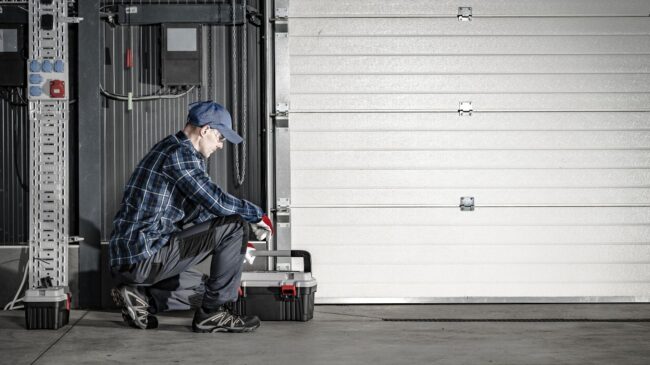
Doors are more than just entry points—they contribute to your home’s security, energy efficiency, curb appeal, and even resale value. But like any other element of your home, they age, wear out, and eventually need replacing. If you’re a Toronto homeowner wondering whether it’s finally time to upgrade, there are several red flags that shouldn’t be ignored.
Understanding when a door has reached the end of its lifespan can save you from higher energy bills, potential security risks, and aesthetic compromises. Below are six common signs it might be time for an upgrade—along with advice tailored to Toronto’s unique weather and housing conditions.
1. Visible Damage or Warping
Toronto’s temperature extremes—sweltering summers and freezing winters—can take a toll on door materials over time. Wood, in particular, is vulnerable to expanding, contracting, and eventually warping. Even fibreglass and steel doors can suffer from dents, cracks, or corrosion.
Visible cracks or a door that no longer fits properly in its frame are more than cosmetic issues—they could compromise security and insulation. If your door doesn’t close flush or requires force to lock, it’s not functioning the way it should.
2. Drafts and Energy Loss
Feel a chill near your entryway in winter or notice a temperature difference when standing near your patio doors in summer? That’s a clear sign of air leakage. Drafts can drive up heating and cooling costs year-round, especially during Ontario’s seasonal extremes.
Many older doors lack proper insulation or have worn-out weather stripping. Newer models offer enhanced thermal performance with better seals and energy-efficient cores, helping to reduce your utility bills. According to Natural Resources Canada, upgrading to energy-efficient doors and windows can lead to noticeable savings and a more comfortable home environment.
3. Difficulty Opening or Closing
Over time, your home settles, frames shift, and doors can begin to sag or swell. If your door sticks, drags, or resists locking, it might be a symptom of underlying structural changes—or a door that’s simply outlived its utility.
A fully functional door should open and close effortlessly, align perfectly with its frame, and secure tightly with minimal effort. Ignoring mechanical issues like this can lead to further damage or compromise your home’s security.
4. Outdated Appearance
While style might seem like a lesser concern compared to security or efficiency, the truth is your front door sets the tone for your home’s entire exterior. A tired, outdated, or faded door can drag down your home’s curb appeal—especially in competitive Toronto real estate markets.
Modern replacement doors come in a variety of finishes, colours, and designs that complement any architectural style, from Victorian to contemporary. Adding decorative glass, sidelights, or a bold paint colour can dramatically elevate the look of your home’s façade.
If you’re considering a visual and functional upgrade, explore high-performance replacement doors in Toronto that offer both energy efficiency and design flexibility. Newer models not only enhance aesthetic value but also reflect your personal style while increasing property appeal.
5. Security Concerns
A sturdy door is your first line of defence against break-ins, and many older doors simply don’t offer the same level of protection as today’s reinforced models. Hollow-core doors, worn-out frames, and rusty locks can all pose a risk.
If you notice loosened hinges, broken deadbolts, or soft spots in the material, it’s time to consider a replacement—especially if the door hasn’t been updated in decades. Modern doors often come with multi-point locking systems, reinforced frames, and impact-resistant cores for maximum safety and peace of mind.
6. Moisture Damage or Mould
Toronto’s high humidity levels, especially in spring and summer, make exterior and patio doors susceptible to water damage. If you see peeling paint, bubbling wood, rust, or even mould around the frame or threshold, it’s a clear indication moisture has found its way inside.
Prolonged exposure to moisture doesn’t just weaken your door structurally—it can also lead to health hazards from mould and mildew. Once moisture gets in, it’s difficult to reverse the damage, making door replacement the smarter long-term decision.
7. Noise Infiltration
If outside noise seems to be making its way inside more than before—whether it’s traffic, construction, or neighbourhood chatter—it could mean your door no longer seals tightly. Noise transfer is often overlooked, but it’s a sign your door is failing to create a proper barrier.
Upgrading to insulated or solid-core doors can significantly reduce sound transmission, enhancing your home’s privacy and comfort. For homeowners in busy areas of Toronto, this alone may be a compelling reason to upgrade.
8. Rising Energy Bills
An increase in your monthly utility bills without any changes in usage often points to heat loss. In many homes, doors are one of the largest culprits for energy inefficiency. According to CMHC, even small gaps around doors can contribute to significant air loss, particularly in older properties.
Replacing a poorly sealed or aging door with an energy-efficient model ensures better insulation and helps you stay within your energy budget—while reducing your environmental footprint.
Making the Smart Move at the Right Time
A door may seem like a minor part of your home, but when it begins to fail, it affects everything from energy performance to safety to overall aesthetics. Recognizing the early signs of wear allows you to address the issue proactively—before it turns into a larger, costlier problem.
Whether you’re dealing with drafts, struggling with locks, or just ready for a style refresh, replacing your door is an investment in comfort, security, and value. With Toronto’s climate and lifestyle in mind, the right replacement door can make all the difference in the way you live and feel in your space.
